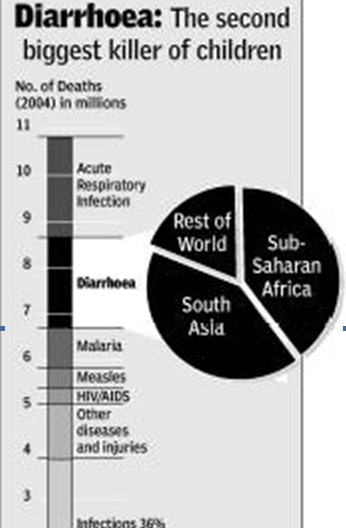Water Economy: India
(→Is inequitable:) |
(→Is inequitable:) |
||
| Line 15: | Line 15: | ||
=Water distribution= | =Water distribution= | ||
| − | ==Is | + | ==Is inequitablein India== |
[[File: water.png | |frame|500px]] | [[File: water.png | |frame|500px]] | ||
[[File: water1.png| |frame|500px]] | [[File: water1.png| |frame|500px]] | ||
Revision as of 07:40, 26 March 2019
This is a collection of articles archived for the excellence of their content. Readers will be able to edit existing articles and post new articles directly |
Water distribution
Is inequitablein India
Times of India This article was published around 2010.
New Delhi: On the face of it, India looks like a country with plenty of water with the average use per person per day exceeding 140 litres. However, as the HDR 2006 points out, aggregate figures are often deceptive, because they conceal the disparity in the distribution of water over regions, groups of people, between rich and poor and between the rural and urban population.
Even in the UK, the average use of water per person per day is only 150 litres, not too far above the Indian level, and in neighbouring Bangladesh, the situation is much worse with less than 50 litres of water available for average use per person per day. Yet, specific examples from different parts show just how disparate the distribution of water is and how dismal the situation is for millions who do not get even the minimum requirement of 20 litres of clean water per person per day.
Official data for Mumbai says the city enjoys a safe water coverage of more than 90%. But, as the HDR points out, almost half the city’s population lives in slums and these residents do not even figure in municipal data.
Similarly, in Chennai, the average supply is 68 litres a day, but areas relying on tankers use as little as 8 litres. The HDR also talks about the ‘water lords’ of Gujarat, land owners who have constructed deep wells depriving neighbouring villages of water, only to sell it back at a high price to those whose wells they have emptied.
NOT ENOUGH LIFELINE
In India, spending on military is 3% of GDP and on water and sanitation it is less than 0.5%
Diarrhoea kills 450,000 in India annually, more than in any other country
Research in India by Self Employed Women’s Association (SEWA) has shown that reducing water collection to one hour a day would enable women to earn upto an additional $100 (Rs 4,500 roughly) a year
In Delhi, Karachi and Kathmandu, fewer than 10% of households with piped water receive service 24 hours a day. Two or three hours of delivery is the norm
If the entire population of South Asia had access to basic low-cost water and sanitation technology, it would save the region $34 billion
See also
Groundwater: India/ Water Resources: India (ministry data)/ Water Economy: India

